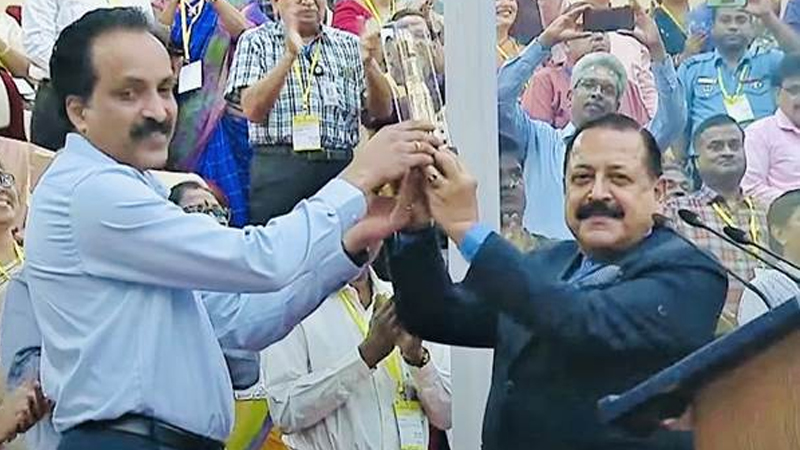
India successfully crossed a decisive milestone by accomplishing the demanding task of soft landing a robotic spacecraft on the Moon. Chandrayan-3’s Vikram lander is now firmly sitting on the South polar region of the lunar surface and getting ready to collect valuable data about the moon, its interior as well as the extremely thin atmosphere surrounding it. And the six-wheeled Pragyan rover, which was cocooned in Vikram till landing, has begun its exploration crisscrossing the landing area at snail’s space.
For its part, the ‘propulsion module’ of Chandrayaan-3 that carried Vikram from Earth to the 150 km high lunar orbit, continues to encircle the Moon there. It has the company of Chandraan-2’s orbital module, which is circling the Moon for the last four years and has sent copious data on its various facets. We are fortunate indeed to simultaneously witness an Indian lander and an Indian rover on the lunar surface along with two of our spacecrafts orbiting the Moon. All this is the result of meticulous planning, perseverance and dedication of thousands of members of India’s proud space fraternity, who are understandability jubilant.
Landing on the airless lunar surface is challenging indeed. That is why only four countries— former USSR/ Russia, China , the US, and now India have accomplished this. What is more important for India is the gentle landing of Chandrayan—3 has been accomplished in south polar region of Moon with its difficult yet alluring terrain. Scientists are captivated by the prospects of water ice in this region. This as well as the supposed presence of relics of early system on this surface are the main reasons for the lunar south polar region becoming the target of spacecraft from India, the US, Russia, China and Japan.
During the days leading up to the Chandrayaan-3’s soft landing, there was talk of a India-Russia ‘race’ to reach the lunar south pole. But India has been striving for a soft landing in the South polar region from the time of Chandraan-2, which could not accomplish the task. And, Russia has its own reasons for taking up lunar exploration after a gap of 47 years.
A careful look at the 3,900 kg weighting Chandrayaan-3’s long journey of 40 days to its destination, reveals clockwise precision with which the planned events took place— from its launch by our own LVM3 vehicle to its placement on the path to encounter the Moon, to insertion into the lunar orbit to separation and then smooth landing of Vikrant. It also points to both the analytical and managerial skills of ISRO, its ability to rise to the occasion.
Since all these operations barring the soft landing had been successfully performed, the event that has aroused suspense among millions of Indians was the landing task itself. Any spacecraft operation of this sort also brings butterflies to the stomach of those who endeavour it seriously. As the live broadcast of the ‘retro burn’ of the majority of the goals of Chandraan-3 stood accomplished.
With the indigenous technologies essential for landing and revolving on the Moon now successfully demonstrated, ISRO shall focus on in situ exploration using three scientific payloads of Vikram and two Pragyan for the next 14 Earth days. This is a period during which the Sun will be continuously shinning over the landing spot, thereby, illuminating Vikram and Pragyan’s solar panels. Until now, ISRO could study the Moon only via remote sensing. (IPA Service)
The post Chandrayaan 3’s Success Vindicates India’s Indigenous Technical Capability first appeared on Latest India news, analysis and reports on IPA Newspack.


